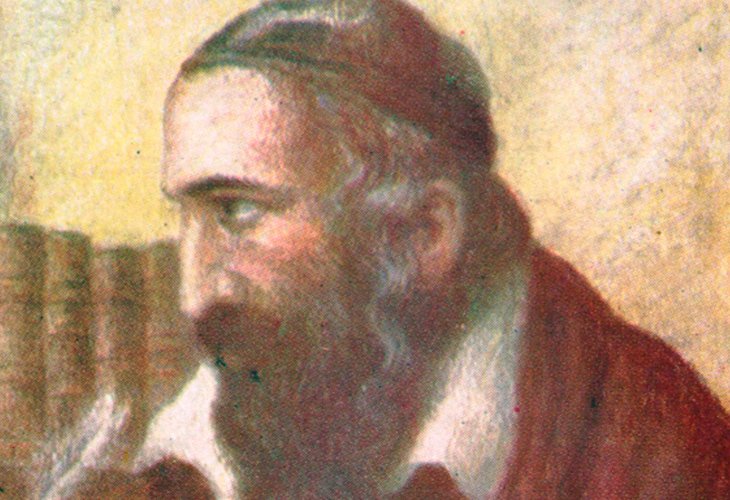Torah Personalities
The Shach: A Brilliant Torah Scholar in a Time of Chaos
Rabbi Shabtai HaKohen’s Genius Shined Through Even Amid War, Exile, and Tragedy
 Imaginative portrait of the Shach
Imaginative portrait of the ShachA Young Genius Who Stunned the Torah World
Rabbi Shabtai HaKohen, known by the acronym "Shach," was born in Poland about 400 years ago. He was a prominent disciple of Rabbi Yeshaya Halevi Horowitz, known as the Shela, and later of Rabbi Yehoshua Heschel of Krakow, who was considered one of the greatest scholars of the generation. Rabbi Heschel’s yeshiva drew many of the era’s major halachic (Jewish legal) authorities, including the Bach (Rabbi Yoel Sirkis), the Taz (Rabbi David HaLevi Segal), and others.
At the young age of 24, Rabbi Shabtai published a monumental commentary on Shulchan Aruch Yoreh De'ah, titled Siftei Kohen (“The Lips of the Kohen”). The work was astonishing in its depth and breadth, so much so that even senior rabbis could not match its scope. It quickly gained acclaim and spread throughout the Jewish world. The commentary was published in 1646.
Exile, Loss, and a Miraculous Reunion
Just two years later, the Jewish communities of Poland were ravaged by the Chmielnicki Massacres (known in Hebrew as Tach v'Tat, thealphanumeric value of the Hebrew calendar years 5408-5409, or 1648–1649 CE), and a wave of brutal violence devastated thousands of Jewish families. Rabbi Shabtai was forced to flee from town to town, like many other Torah scholars of the time.
According to one story, during his flight, his daughter Esther was lost in a thick, dark forest. He mourned her, assuming she had perished at the hands of cruel pursuers or the harsh elements.
Years later, while a guest in the home of a fellow Jew, the Shach sat in a corner learning Torah. A maid was called in to serve the food, and upon hearing his unique melody of Torah learning, she suddenly cried out, recognizing the familiar sound of her father’s voice.
The maid turned out to be his long-lost daughter. She had survived, only to be sold into servitude for three years. Their reunion was a deeply emotional one. Rabbi Shabtai arranged for her to marry a worthy Torah scholar.
Torah in the Midst of Suffering
During the height of the massacres, Rabbi Shabtai wrote a brilliant halachic work titled Takfo Kohen. Written in a single month, this book is filled with sharp analysis and deep reasoning. To this day, it is studied in yeshivas around the world when learning the topic of safek mamon (monetary doubt).
He also composed Megillat Eifah, a somber account of the destruction and suffering that befell the Jewish people during the massacres and subsequent events known as the "War of the Outlaws."
In addition to his work on Yoreh De'ah, Rabbi Shabtai also authored a commentary on Shulchan Aruch Choshen Mishpat. This commentary became one of the most authoritative halachic works ever written and is still printed alongside the Shulchan Aruch to this day.
A Lasting Legacy Cut Short
Despite the unimaginable hardships and instability of his time, the Shach managed to produce an extraordinary volume of scholarship. Tragically, he passed away at the young age of 42. He was buried in the town of Hlohovec (Halishoy), where he had served as a rabbi.
The synagogue where he taught still stands and now functions as a Jewish museum, an enduring monument to a man whose Torah and courage left an indelible mark on Jewish scholarship.

